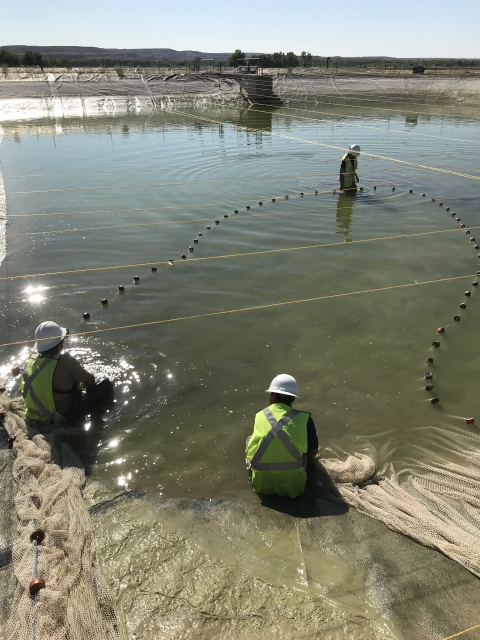What We Do
Ouray National Fish Hatchery -Randlett retains over 500 razorback sucker broodstock broodstock
The reproductively mature adults in a population that breed (or spawn) and produce more individuals (offspring or progeny).
Learn more about broodstock on station and is responsible for the stocking of 6,000 -350mm razorback sucker into the Green River each year. All razorback suckers that are released to the river are tagged with a Passive Integrated Transponder (PIT), weighed, and measured prior to release. This data is placed into a data base so that field biologists can identify where these fish came from when they are captured during various studies. Ouray National Fish Hatchery also produces excess razorback sucker larvae for scientific studies, including flooded bottomlands of the Green River that serve as nursery habitat for the species, and for larval drift studies.
Management and Conservation
The next time you go fishing, you might just catch a fish that was raised at Ouray National Hatchery. Since 1871, National Fish Hatcheries have been responding to conservation challenges affecting America’s fish and other aquatic species. Producing fish continues to be an irreplaceable tool in managing or restoring fisheries along with habitat conservation. In doing so, we help provide recreation opportunities to America’s 34 million anglers who spend $36 billion annually in pursuit of their favored pastime.
Our Services
The Ouray facility consists of a 36,000-gallon indoor recirculation hatchery with 27 eight-foot circular fiberglass tanks and 30 four-foot circular fiberglass tanks. The isolation room has been rebuilt with a separate recirculation system containing 19 three-foot circular fiberglass tanks which also doubles as a 19-jar egg incubation hatchery during spawning season. Water temperatures can be manipulated to run anywhere between 54 F and 72 F depending upon fish and/or egg needs. There are also 24 -- 0.2-acre production ponds, and 12 -- 0.5 acre broodstock broodstock
The reproductively mature adults in a population that breed (or spawn) and produce more individuals (offspring or progeny).
Learn more about broodstock ponds, most of which are covered with bird netting. The water source consists of seven shallow wells (40 feet deep) located near the Green River approximately 0.5 miles from the hatchery.
Our Projects and Research
National Fish Hatcheries raise fish and other aquatic species – like crayfish and mussels - to help restore and sustain important fish and other aquatic species for the benefit of the American people. Freshwater mussels play very important roles in our rivers and lakes filtering the water and creating habitat for fish and aquatic insects fish like to eat. With declining fish populations and declining freshwater mussel populations becoming prevalent across the world, fish hatchery operations are important than ever.


